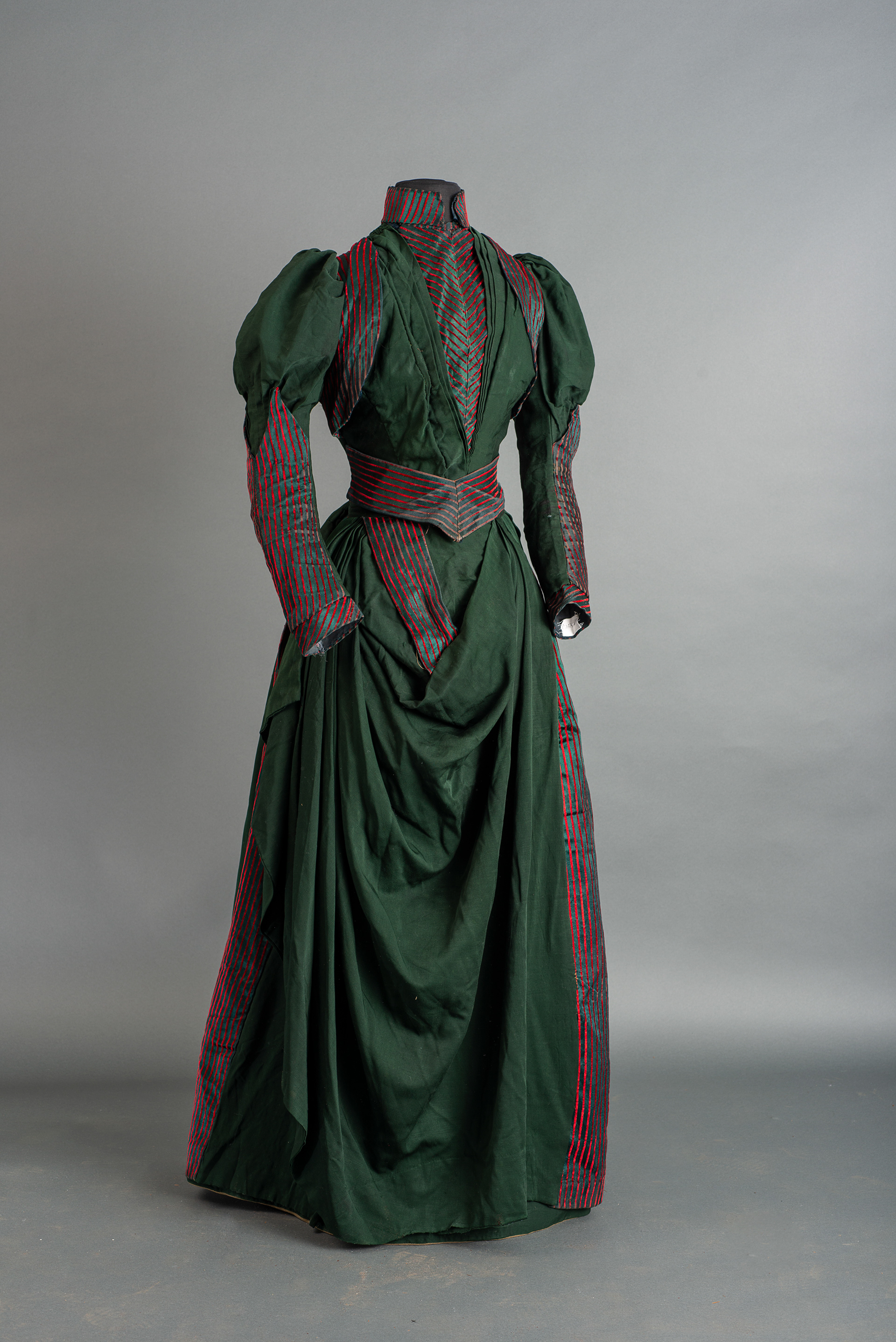Day Dress
1890
The silhouette in the 1890s was quite different from the earlier decades, since the bustle had faded from popularity. This green and red wool dress is an example of this new style of dress. The sleeves are fitted throughout besides the puff at the shoulder. The dress has a tight bodice, high neckline and fitted sleeves. This dress is complex with the way it drapes and folds. It was complicated to put on as it has many layers of buttons to achieve the folded appearance. Although the back of the dress has a lot of pleating, it is not meant to be supported by a bustle.
Work Dress
1885-1890
Work dresses can come in the form of one-piece garment as well as a two-piece ensemble. The leafy branch pattern of this cotton work dress would hide dirt. This work dress does not have much shape to it; there is no waist band and no boning. The sleeves are loose but buttons close the wrist so the sleeves would not get in the way of doing work. This cotton dress was worn by Mrs. Billings, and judging by the amount of tears and wear on the garment, she wore it often.
Comparing The Day Dress And Work Dress
The green day dress and the stylized leaf work dress are vastly different pieces. The work dress had a purpose of being loose and not restrictive. It was designed for a woman who had to do hard work, while the green dress is beautiful but too restrictive to be functional. The sleeves are tightly fitted all around the arm and to be fitted under the shoulder puff, making arm movement limited. While the green dress is much more fashionable, the work dress is more practical.

Wool Dress

Work Dress

Day Dress

